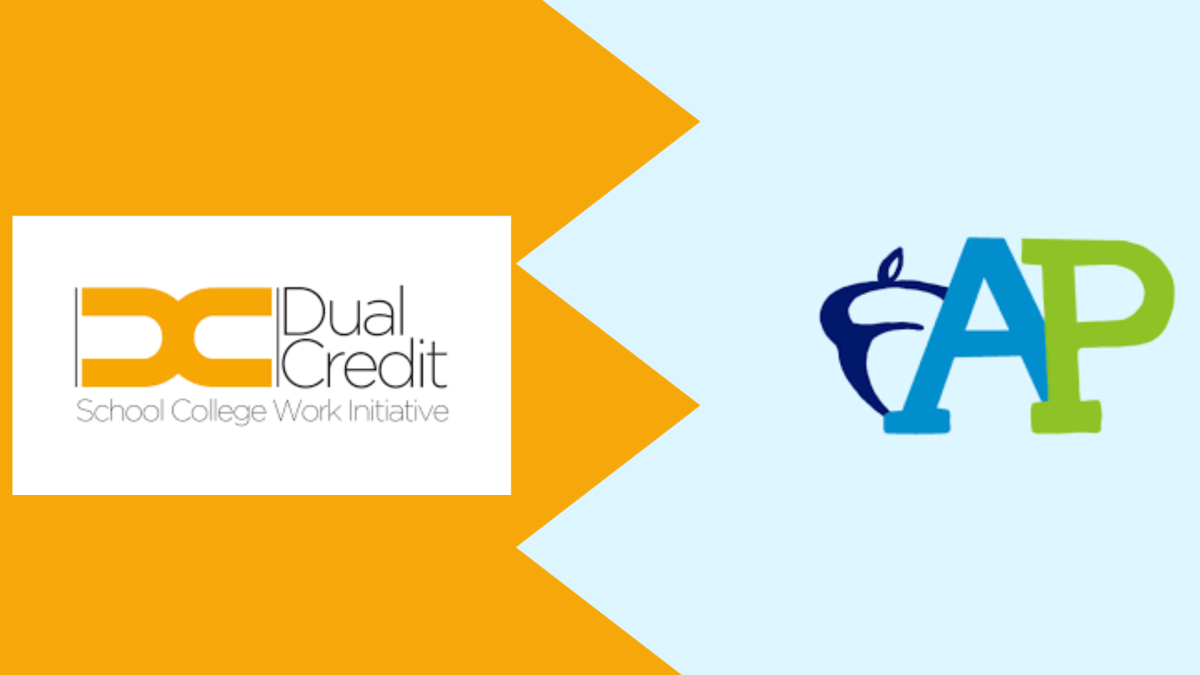For most college-minded students in the school, advanced courses are a necessity to prepare them for college and to add some rigor in their daily schedule. Luckily, the school offers a variety of Advanced Placement (AP) courses and dual credit classes available for them to choose from. While these classes may have the same premise behind them, they couldn’t be any more different.
“ I know there are a lot of people who think that they differ only on the credit scale, but they are very different from each other,” Judijoy Jeter, a senior said. “I think it’s important that people, freshmen and sophomores, know, so they can take classes that will benefit them in the future.
AP classes are 5.0 credit classes created and curated by College Board, a college prep organization, in order for students to get college credits before enrolling in college. The curriculum is derived from the College Board and at the end of the year students have the decision of taking the AP test for the college credit.
“ I’m taking 3 of them [AP classes], Calc AB, Lit and Physics, “ Jeter said. “ They’re kind of challenging, I’m not going to lie, but I really enjoy it because I feel like I’m getting a taste of what actual college class will be like”
In contrast, dual credit classes [at Seven Lakes] are taken through Houston Community College: they are 4.5 classes that students take to gain high school and college credit simultaneously. Students in dual credit don’t follow the normal school curriculum, grading system and calendar.
“I prefer Dual Credit because it feels like an actual college class,” Giselle Afolabi, a senior, said. “ I even have like 36 hours of college credit, which is really great for someone who hasn’t started college yet.”
Both sound great in theory, and are splendid opportunities for students to get college credit; naturally, however, they have their shortcomings.
For instance, AP classes can be challenging and require a certain amount of determination that typical KAP and academic classes don’t. Also, aside from passing the actual class and obtaining the high school credit, people need to get at least a 3 on the AP test to receive college credit, while some more selective colleges require a higher score.
“If I wanted to go to UT Austin, I would need to get a 4 on my AP test for my hard work to pay off; it kind of adds a certain level of pressure. I guess I can see how dual credit is better in that way,” Jeter said. “Also, I know schools like Brown and Caltech don’t take AP credit, so it’s like, ‘why did I waste my money and time?’”
For dual credit students, they will only be able to use their credit if they decide to go to school in Texas, which can be seen as a waste of time and money. Also, while AP classes offer a diverse range of courses varying from Japanese to Studio Design, they are only a limited amount of dual credit classes offered, which can be a hindrance for students who’d like to take more advanced classes outside the categories of math, science, social studies, and English.
“One thing I don’t like about dual credit is that they don’t offer enough classes,” Afolabi said. “I’d love to take more dual credit classes that aren’t just core curriculum classes.”
Honestly, whatever class one takes, whether it being AP or dual credit, or even KAP or academic, it is important to know if that is the right course for whatever they want to accomplish, whether it is to try something new, push themselves out of their comfort zone with a challenging course, simply try to pass, or just take a class that promises fun.



